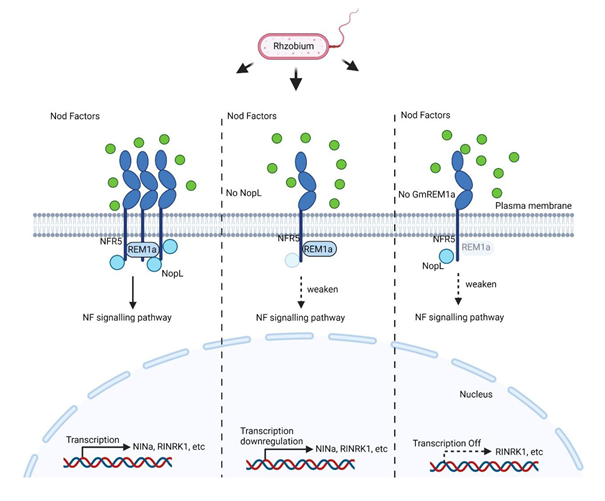NopL interacts with symbiotic NF signaling
The type III effector NopL interacts with GmREM1a and GmNFR5 to promote the nodulation in soybean
The establishment of symbiotic interactions between leguminous plants and rhizobia requires complex cellular programming activated by rhizobium Nod factors (NFs) as well as type III effector (T3E)-mediated symbiotic signaling. However, the mechanisms by which different signals jointly regulate symbiotic interactions are still unclear.
In a study published in Nature communication, Pr. Dawei Xin (Northeast Agricultural University, Harbin, Chine) and P. Ratet (SYMUNITY, IPS2) teams have described a mechanism of cross-communication between the T3SS NopL effector and the NFs produced by Sinorhizobium fredii during its symbiotic interaction with soybean (Glycine max). NopL physically interacts with the G. max Remorin 1a (GmREM1a) and the NFs receptor NFR5 (GmNFR5) proteins, and promotes the recruitment of GmNFR5 by GmREM1a. Furthermore, NopL and NFs influence the expression of GmRINRK1, a receptor-like kinase ortholog of the Lotus japonicus RINRK1 receptor, to mediate NFs signaling. Taken together, our work indicates that S. fredii NopL can interact with NFs signaling cascade components to promote the symbiotic interaction in soybean

10/10/2024
